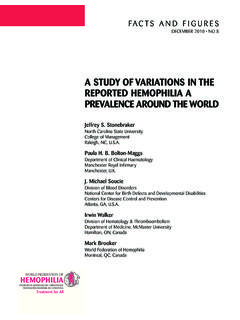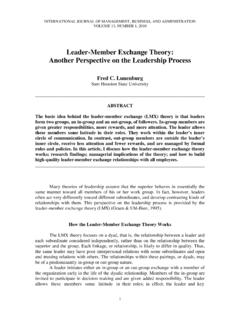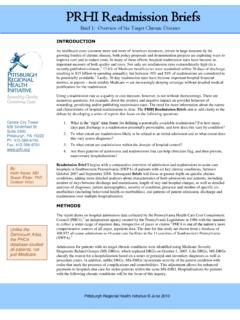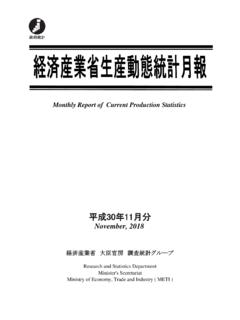Transcription of CDP-Star, ready-to-use - Roche
1 Print For life science research only. Not for use in diagnostic procedures. CDP- star , ready -to-use Disodium 2-chloro-5-(4-methoxyspiro {1,2-dioxetane-3,2'-(5'-chloro)tricyclo[ ,7]decan}-4-yl) phenyl phosphate Ultra-sensitive and fast chemiluminescent substrate for alkaline phosphatase Cat. No. 12 041 677 001 2 50 ml y Version Content version: June 2010. Store in dark at 2 to 8 C. 1. What this Product Does Contents Molecular weight mM solution ( mg/ml), 1 conc. Formula C18H19Cl2O7 PNa2. 2 bottles with dropper, 50 ml each Appearance clear, colorless solution Purity CDP- star , ready -to use (purified by HPLC) >98%. Storage and Stability Store the unopened reagent at +2 to +8 C until the expiration date Sensitivity A single-copy gene (tissue plasminogen activa- printed on the label.)
2 Tor, tPA) is detected in a Southern blot in 3 g human placental DNA using a DIG-labeled N Store protected from light. DNA probe and CDP- star , ready -to use, with a film exposure time of < 5 min. Using DIG- Application labeled RNA probes, similar sensitivity is CDP- star is a chemiluminescent substrate for alkaline phosphatase obtained. that enables sensitive and fast detection of biomolecules by Signal stability The chemiluminescent signal from CDP- star , producing visible light. Light emission is recorded on X-ray films, ready -to-use, persists for days on nylon mem- with suitable cameras, or on luminescence imager systems (1). branes. Since film exposures of a few minutes are CDP- star can be used for the detection of alkaline phosphatase and usually sufficient, multiple images may be alkaline phosphatase conjugates either in solution or on solid sup- acquired.
3 Ports. It is especially suited for highly sensitive and fast detection of nonradioactively labeled nucleic acids in: Advantage Immediately after substrate addition, CDP- star , Southern blots ready -to-use, generates a luminescent signal of an approx. tenfold increased sensitivity, com- Northern blots pared to other chemiluminescent substrates, dot blots, , cDNA arrays , CSPD*, both on nylon membrane and in colony or plaque hybridizations solution. gel shift assays Assay Time N For chemiluminescent detection of nucleic acids with CDP- star , the use of nylon membranes is strongly recommended. Nitrocellu- lose membranes require addition of an enhancer ( , Nitro- Step Time Block-II, Life Technologies) to achieve similar signal intensity.
4 Blocking of membrane 30 min Washing of membrane 2 min Product Characteristics Antibody binding 30 min Reaction Principle Washing of membrane 2 15 min Enzymatic dephosphorylation of dioxetane by alkaline phosphatase Equilibration 2 min leads to the formation of the meta-stable dioxetane phenolate anion which decomposes and emits light at 466 nm. On nylon membranes, Luminescent reactions 5 min the maximum light emission from CDP- star , ready -to-use, is Film exposure 1 min reached within a few minutes. Total time 100 min Fig. 1: Reaction scheme . 2. How to Use this Product Procedure The volumes are calculated for a membrane size of 100 cm2. All incu- Before You Begin bations should be performed at +15 to +25 C with agitation.
5 Precaution N Avoid contact and handle with care. Wear gloves and a laboratory After hybridization and stringency washes, rinse membrane coat. briefly (1 5 min) in Washing buffer. Incubate for 30 min in 100 ml Blocking solution. Detection of DIG-labeled Nucleic Acids Incubate for 30 min in 20 ml Antibody solution. Nucleic acid probes can be labeled very efficiently with digoxigenin (DIG) and be used as hybridization probes in various membrane blot Wash 2 15 min in 100 ml Washing buffer. applications. After stringency washes, the blots are subjected to Equilibrate 2 5 min in 20 ml Detection buffer. immunological detection using anti-digoxigenin antibody conjugated to alkaline phosphatase followed by CDP- star , ready -to-use.
6 Detailed Place membrane with DNA side facing up on a development protocols for DIG labeling and hybridization are available in the prod- folder (or hybridization bag) and apply 20 drops ( ml). uct descriptions of various DIG labeling and detection kits (see below) CDP- star , ready -to-use solution out of the dropper bottle. and the DIG Application Manual for Filter Hybridization. Immediately cover the membrane with the second sheet of the folder to spread the substrate evenly and without air Detection Procedure for Blot Applications bubbles over the membrane. Incubate for 5 min at +15 to +25 C. Additional Equipment Required Squeeze out excess liquid and seal the development folder hybridization bags* completely.
7 OR. Expose to a luminescent imager for 5 20 min or to X-ray film temperature resistant plastic or glass boxes, petri dishes or roller for 15 25 min at +15 to +25 C. bottles L Luminescence continues for at least 48 hours. The signal increases in the first few hours after initiation of the detec- Additional Reagents Required tion reaction until it will reach a plateau where signal Anti-digoxigenin-AP, Fab fragments* intensity remains almost constant during the next 24 48. DIG Wash and Block Buffer Set* hours. OR. Stripping and Reprobing of DNA Blots Washing buffer Maleic acid buffer General Detection buffer If DNA probes are labeled with DIG-11-dUTP, alkali-labile, blots can be stripped efficiently and reprobed, provided that the membranes never dried to completion during the entire procedure.
8 Southern Preparation of Additional Solutions blots hybridized with DIG-labeled RNA probes can be stripped fol- lowing the same procedure. Solution Composition/Preparation Storage/ Use Stability Additional Equipment and Reagents Required Large tray Washing M Maleic acid, M +15 to Removal of buffer NaCl; pH (+15 to +25 C); +25 C, unbound Water bath (v/v) Tween 20 stable antibody 10 SSC. Maleic M Maleic acid, M +15 to Dilution of 10% SDS. acid buf- NaCl; adjust with NaOH (solid) +25 C, Blocking N NaOH. fer to pH (+15 to +25 C) stable solution Detec- M Tris-HCl, M NaCl, pH +15 to Adjustment Procedure tion buf- (+15 to +25 C) +25 C, of pH to Please refer to the following table.
9 Fer stable for the sub- L Alternative stripping protocols, as mentioned in the DIG Applica- strate reac- tion Manual for Filter Hybridization ( tion ), can also be used with high efficiency. Blocking Dissolve Blocking reagent 10% +15 to stock (w/v) in Maleic acid buffer +25 C. solution, under constantly stirring on a Rinse membrane thoroughly in double-distilled water. 10 heating block (65 C), or heat Wash for 2 15 min at +37 C in M NaOH containing in a microwave oven, auto- SDS to remove the DIG-labeled probe. clave and store at +2 to +8 C. The solution remains opaque. Rinse thoroughly 5 min in 2 SSC. Blocking Prepare a 1 working solution always Blocking of Prehybridize and hybridize with a second probe.
10 Solution by diluting the 10 Blocking prepare unspecific solution 1:10 in Maleic acid fresh binding sites buffer. on the membrane Antibody Dilute anti-digoxigenin-AP to +2 to Binding to solution mU/ml = 1:20 000 in +8 C the DIG- Blocking solution. labeled probe L For a 10 cm2 blot 20 ml are necessary. 2. 3. Troubleshooting 4. Additional Information on this Product Quality Control Problem Possible Cause Recommendation pg DIG-labeled control DNA (pBR328/Bam HI) diluted in 50 ng heterologous DNA are detected in a dot blot with CDP- star after <10. Low sensi- Inefficient Check labeling efficiency of your DIG DNA. tivity probe labeling or RNA labeling by comparison to the min exposure to X-ray film, following the standard detection protocol.






